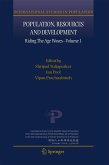This book examines the long term consequences of improvements in life expectancy in the mid 20th century which are partly responsible for the growth of the elderly population in the developing world. Rapid demographic changes in child and infant mortality due to the reduction in and better treatment of disease were not often accompanied by parallel increases in standard of living. Lower mortality led to greater survival by those who had suffered poor early life conditions. As a consequence, the early life of these survivors may explain older adult health and in particular the projected increase in adult health disease and diabetes. Recent dietary changes may only compound such early life effects. This study presents findings from historical and survey data on nearly 147,000 older adults in 20 low-, middle- and high-income countries which suggest that the survivors of poor early life conditions born during the 1930s-1960s are susceptible to disease later in life, specifically diabetes and heart disease. As the evidence that the aging process is shaped throughout the entire life course increases, this book adds to the knowledge regarding early life events and older adult health.








